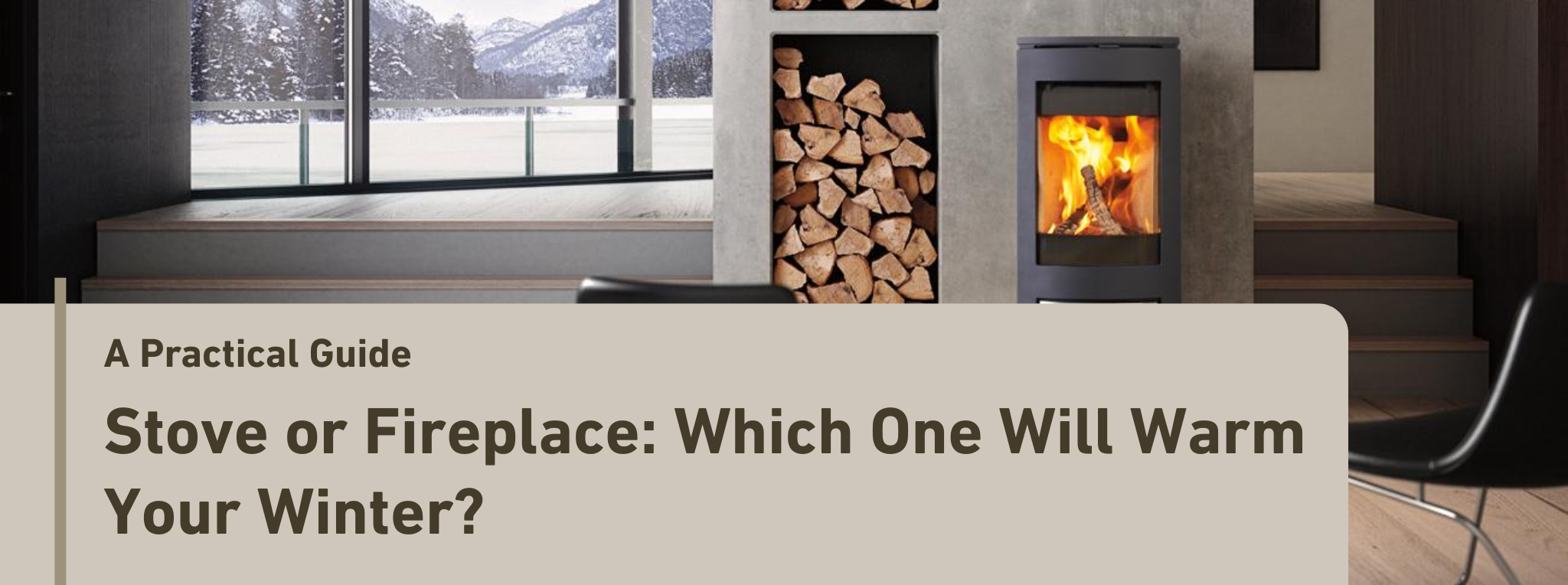
Tips
Stove or Fireplace: Which One Will Warm Your Winter?
A Practical Guide
By Alyssa Jerome
| August 28, 2025
Stove, high-efficiency fireplace, decorative fireplace, insert, prefabricated model… with so much jargon, it’s easy to get lost. In the end, only one question matters: which appliance truly meets your needs?
To simplify, keep this distinction in mind:
- The stove is first and foremost a piece of furniture, a standalone unit that houses a flame, providing efficient heating and a welcoming atmosphere without major renovations.
- The fireplace is part of a construction project. Usually prefabricated, it’s built into a wall and finished with the materials of your choice.
- The insert is designed to fit into an existing fireplace (often an inefficient masonry one), giving it a second life.
Finally, when it comes to decorative fireplaces, know that they provide a spectacular visual experience, but their efficiency remains limited. Their burn is shorter and less controlled, which allows them to come in original, imposing formats: large guillotine glass doors, sleek linear fireplaces (such as Renaissance models, for example). Their purpose is mainly recreational and aesthetic, but they can still provide supplementary heating for a short period of time.
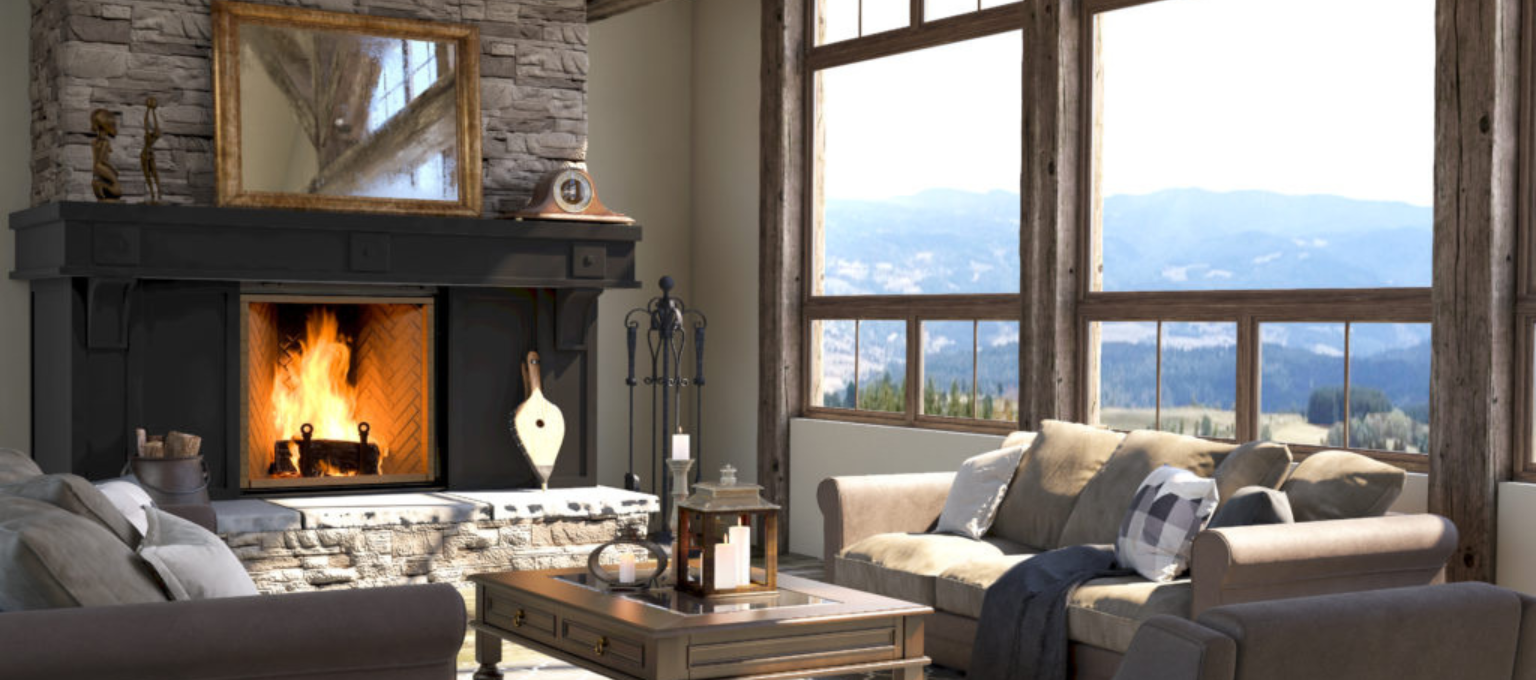
If, however, you want to extend comfort for hours with a single load, you’ll need to choose a high-efficiency model and enjoy a true heating solution.
To guide you without jargon, here are some simple markers by appliance type. You’ll quickly identify the one that best matches your needs.
The Stove
Unlike a fireplace, a stove is not built into the house. Independent and floor-standing, it can even be moved if necessary, making it more flexible and less restrictive than built-in units.
Beyond its function, a stove is also a decorative statement. It draws the eye and highlights the flames, creating a warm, inviting atmosphere. It adapts easily to modern, rustic, or classic spaces.
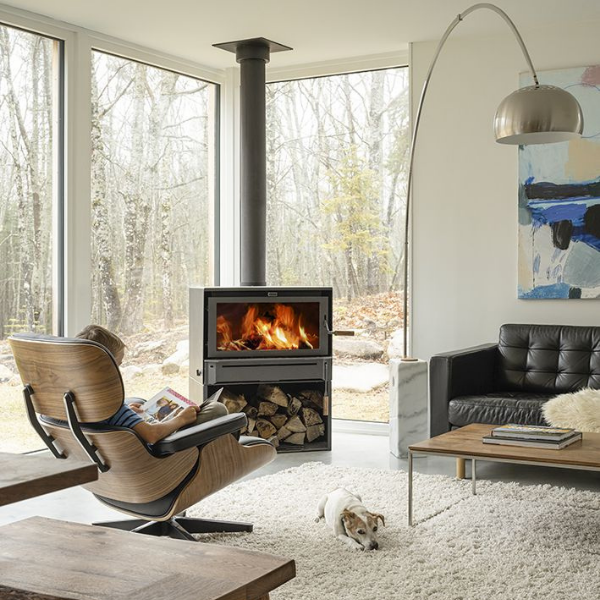
Validate your choice
1) GOAL
- You dream of a visible, cozy fire that combines efficiency with style.
- You want a decorative element that showcases the flame.
- You plan to heat mainly one room.
2) SPACE & HOME
- You want to enhance the atmosphere of a central space.
- You see the unit as a visual focal point in your decor.
3) Installation & flexibility
- You prefer a floor-standing, independent appliance with no major work.
- Mobility is a plus.
- You like a quick, simple installation compared to a built-in fireplace.
The Fireplace
The fireplace is integrated into the structure of the home: a permanent architectural feature that is both functional and aesthetic. Usually prefab, it’s a popular option for new builds and requires professional installation.
Its big advantage: versatility. A high-efficiency fireplace can also be connected to heat distribution systems, helping to warm multiple rooms, or even the whole house consistently.
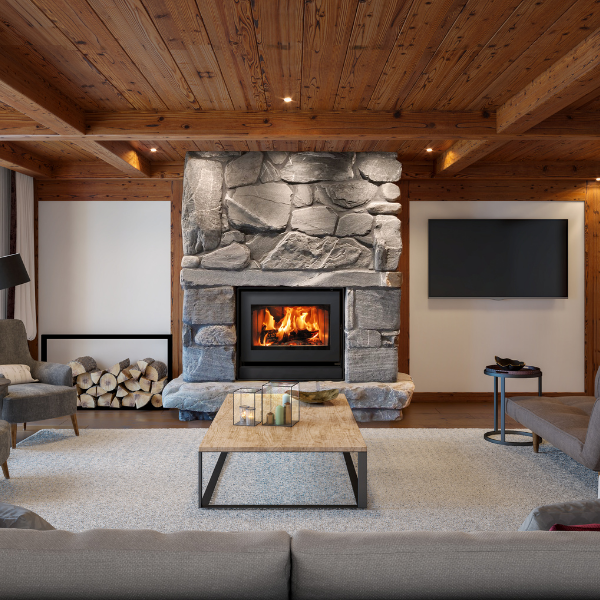
Validate your choice
1) GOAL
- You want a major architectural feature in your new construction.
- You value the possibility of heating multiple rooms (or the whole home) via a distribution system.
2) SPACE & HOME
- You want a wall-integrated appliance that becomes a permanent part of your home’s layout.
3) Installation & flexibility
- You accept a more complex, professional installation.
- The position will be fixed and permanent.
- You’re prepared for a project timeline before you can use it.
What About The Insert ?
Often confused with fireplaces, inserts are actually high-efficiency stoves designed to fit inside an existing masonry fireplace or a decorative prefab fireplace with no real output.
With no legs or pedestal, their compact design slides neatly into the existing space upgrading it with modern, eco-friendly performance. In short, inserts bring new life to old fireplaces.
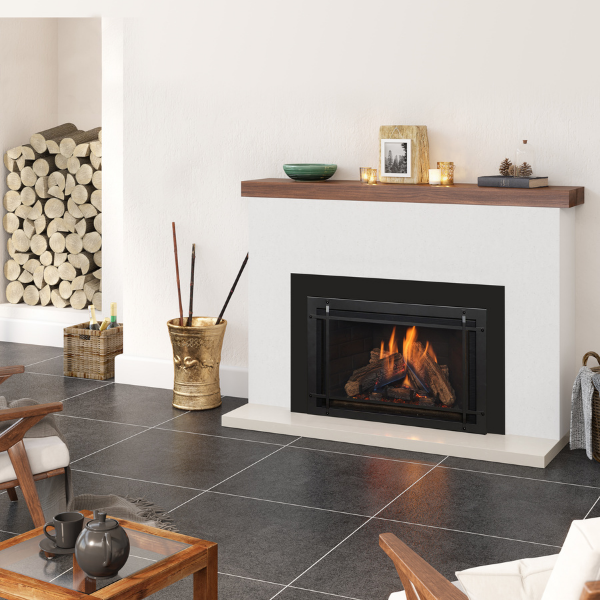
Validate your choice
1) GOAL
- You want to renovate and modernize a masonry fireplace or a decorative prefab with no efficiency.
2) Space & Home
- You want an integrated look that feels part of the wall.
3) Installation & Flexibility
- Fits into an existing fireplace.
- Quick installation.
Coval’s Tip
Want a stove but love the idea of whole-home heat distribution like some fireplaces offer? It’s possible.
While a compact stove is ideal for a single room, a larger one can help heat the entire house. You just need a system to circulate the warmth such as a floor register, ceiling fan, or air exchanger for comfort throughout.
Fuel Options
Once you’ve chosen the appliance type, it’s time to pick the right fuel: wood, pellets, natural gas/propane, or electricity. Each has its own advantages.
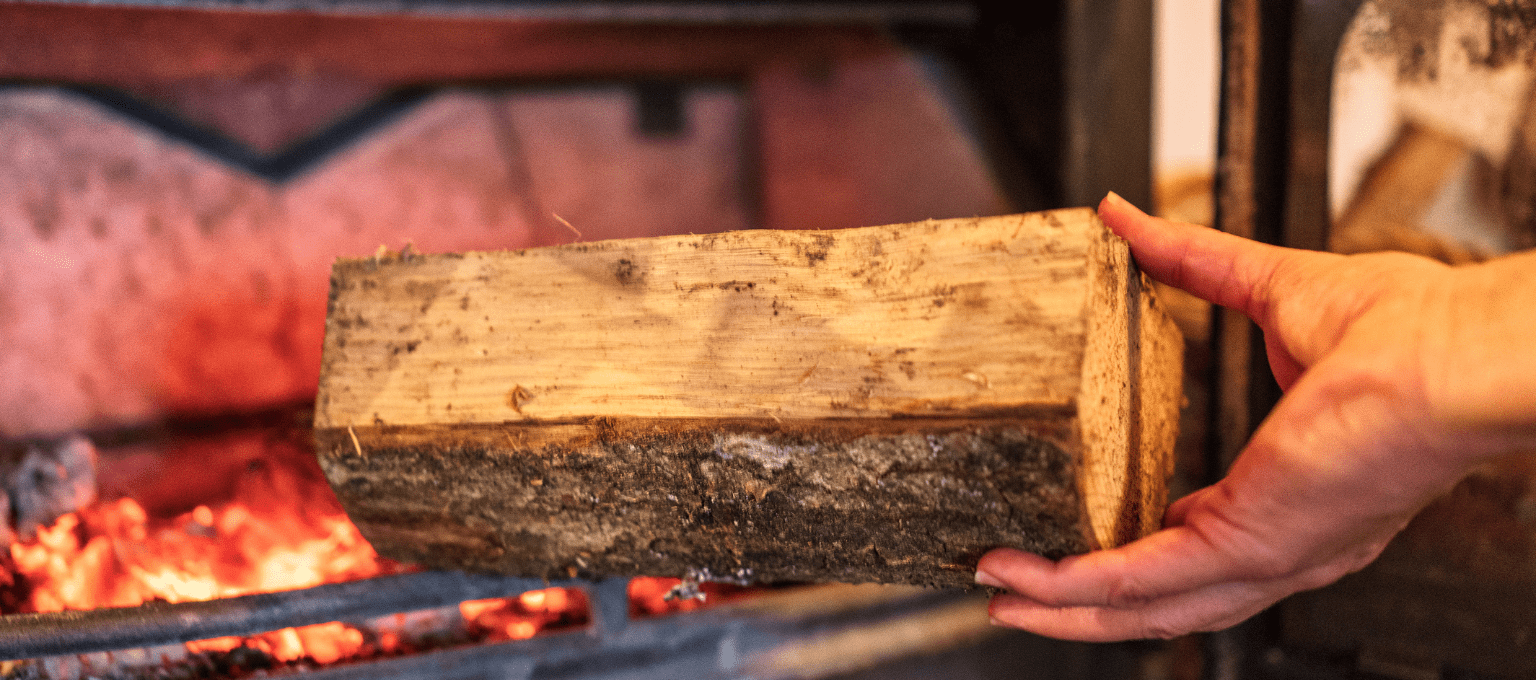
1. Wood — The Classic Choice
Loved for its authentic charm, wood seduces with natural flames, the crackle, and that unmistakable aroma, a truly sensory experience. It gives you autonomy without electricity and a deep, lasting heat. If you’re wondering whether heating with wood is still permitted in Québec, the answer is yes, only if you choose EPA- or CSA-certified appliances designed to significantly reduce emissions.
Wood is chosen for :
- Immersive experience (scent, flame, warmth, crackle)
- No electricity required
- Long-lasting performance
- Local, carbon-neutral biomass
Things to consider
- Safe installation required (high quality chimney and venting)
- Wood quality and storage
- Regular maintenance
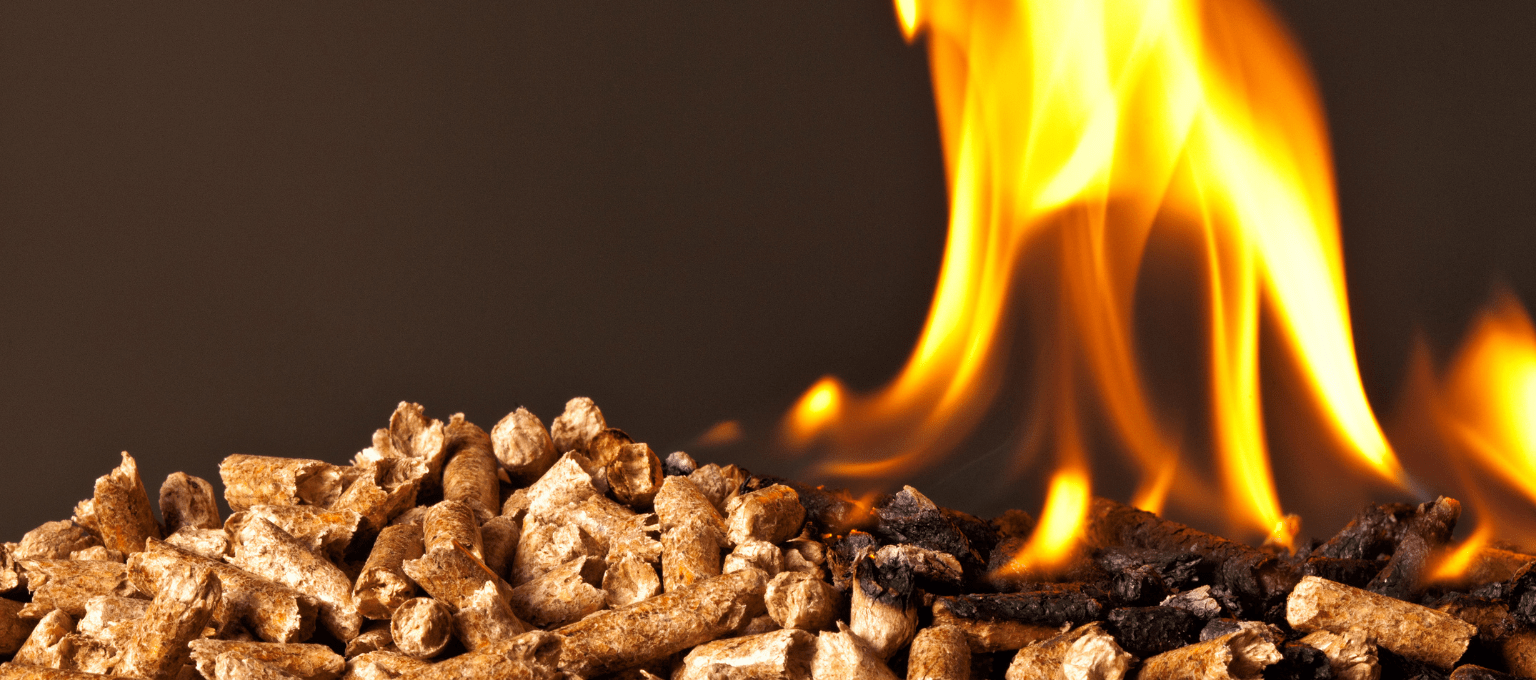
2. Pellets — The Eco-Responsible Option
Pellets combine high efficiency with modern comfort. Automatic feeding delivers steady, even heat. Pellets are easy to store, cleaner than wood, and made from recycled wood residues.
Pellets are chosen for :
- Programmable comfort
- Practical, compact fuel
- Very high efficiency
- Long autonomy per load
- Less maintenance than wood
Things to consider
- Safe installation required (proper venting)
- Electrical supply (or not)
- Pellet quality and storage
- Regular maintenance
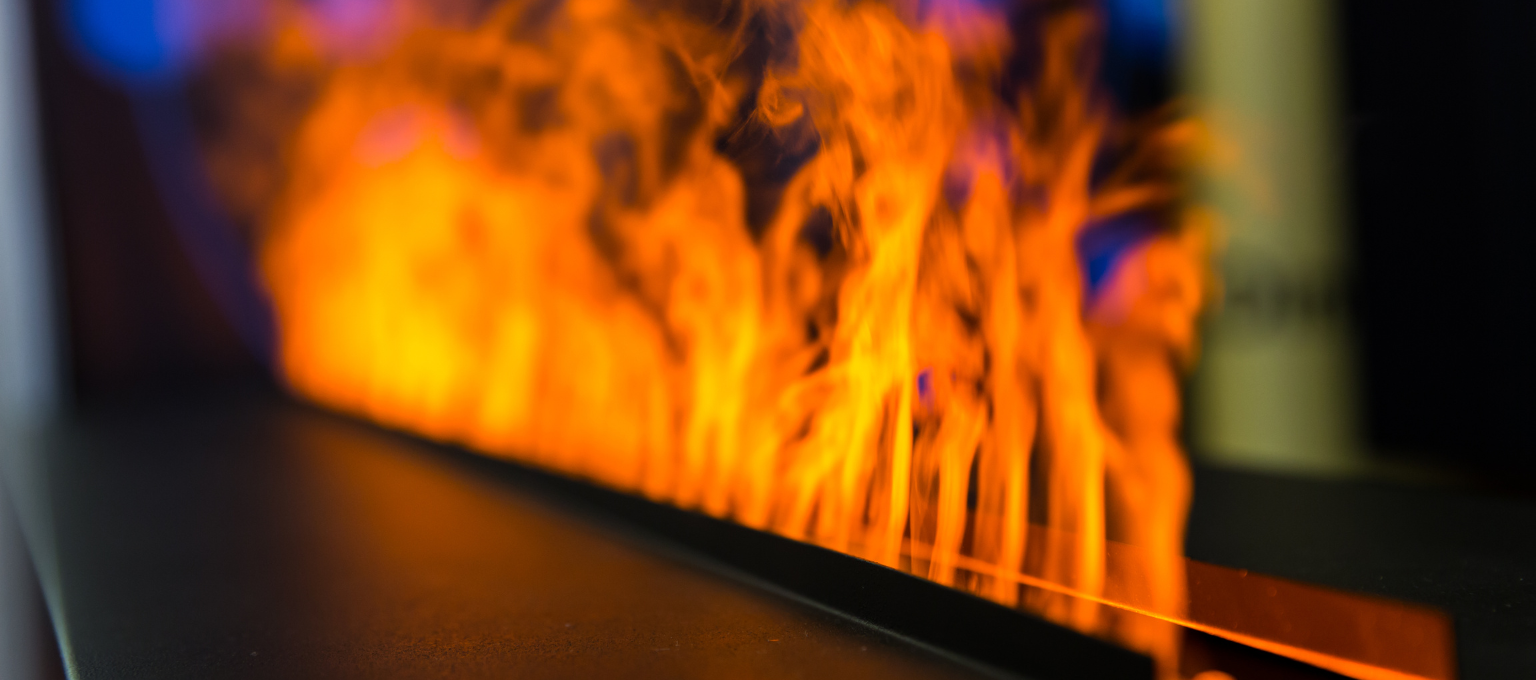
3. Natural Gas or Propane — The Urban Choice
Perfect for anyone who wants real flames with almost no hassle, gas offers instant comfort and simple operation. The unit ignites in seconds, is easy to control via remote or thermostat, and requires very little maintenance. Realistic flame effects (often with logs, branches, or decorative stones) create a warm, adjustable ambiance.
Unlike wood, gas is generally better suited to urban environments, as long as safety standards are met (notably tank placement for propane).
Gas is chosen for :
- Effortless ambiance
- Instant, adjustable heat
- Minimal maintenance
- Realistic flame presentation
Things to consider
- Safe installation required (proper venting and exhaust)
- Gas type and tank placement
- Heating capacity matched to your space
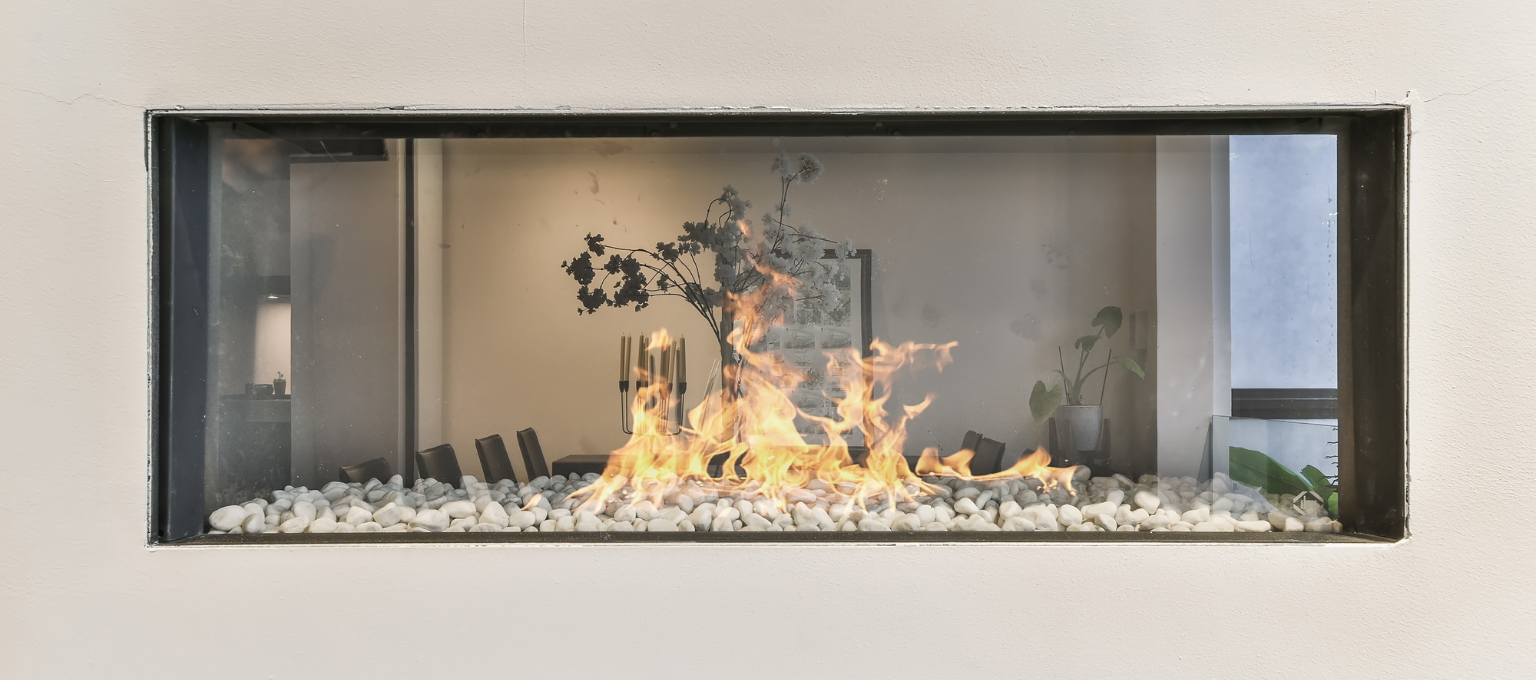
4. Electric — The Easy Condo Solution
With no flue or chimney required, electric units install in minutes and fit anywhere: living room, bedroom, office, and more. They need no maintenance and let you vary the mood with LED flame effects (sometimes colorful) or even water-vapor technology for added realism.
Primarily ambiance appliances, some models also provide heat via a built-in element. In all cases, they depend entirely on electricity.
The electric option is chosen for :
- Adjustable ambiance
- Quick supplemental heat
- Very easy installation
- Total placement flexibility
- Zero maintenance
Things to consider
- Adequate electrical supply
- Sufficient power output for the space
Have you found the fire that makes you dream? Before moving forward, confirm it’s allowed in your area. Some municipalities regulate or restrict wood-burning appliances.
This guide gives you the essentials but since every home and project is unique, visiting your local dealer is the best way to turn vision into a practical, lasting choice.
More News
Are you searching for the ideal gift for someone who enjoys cooking and entertaining? Explore our range of gifts from Ooni, Le Marquier, and Green Mountain Grills. These products are built to last and make a great impression.
Our chimneys smoke less, but wood heating has never disappeared. The same log now heats up to twice as much as in 1990, not because it has changed, but because the device has become ultra-efficient. The difference lies in the engineering.
Choosing a pellet stove is opting for reliable, efficient, and durable heating. Today’s models combine high performance, programmable comfort, and sleek design. True pieces of furniture, they provide controlled warmth and a design that naturally integrates into any interior.



